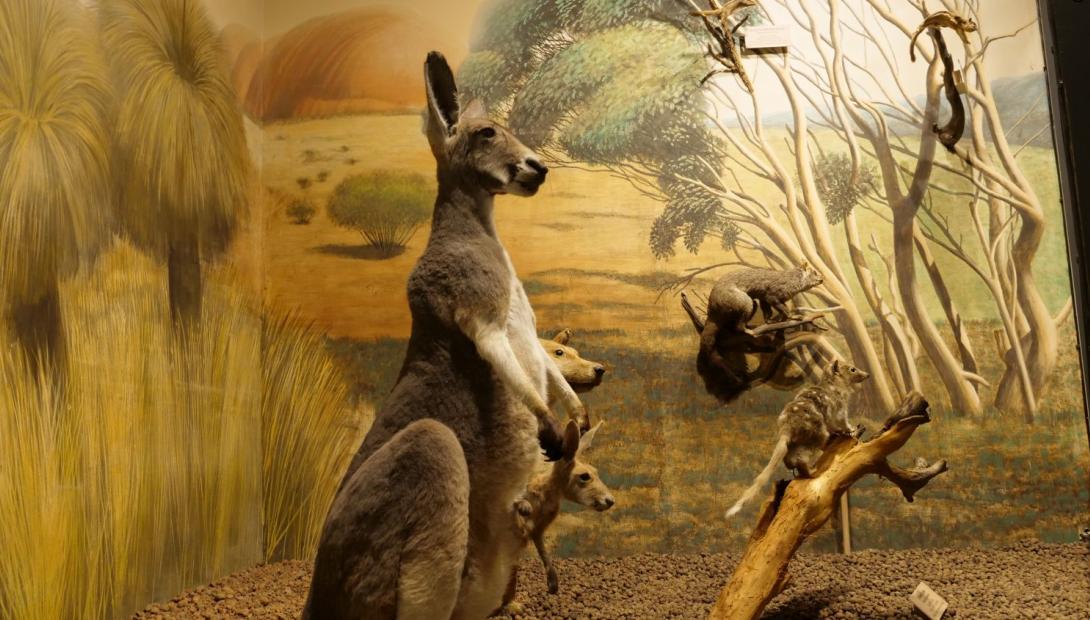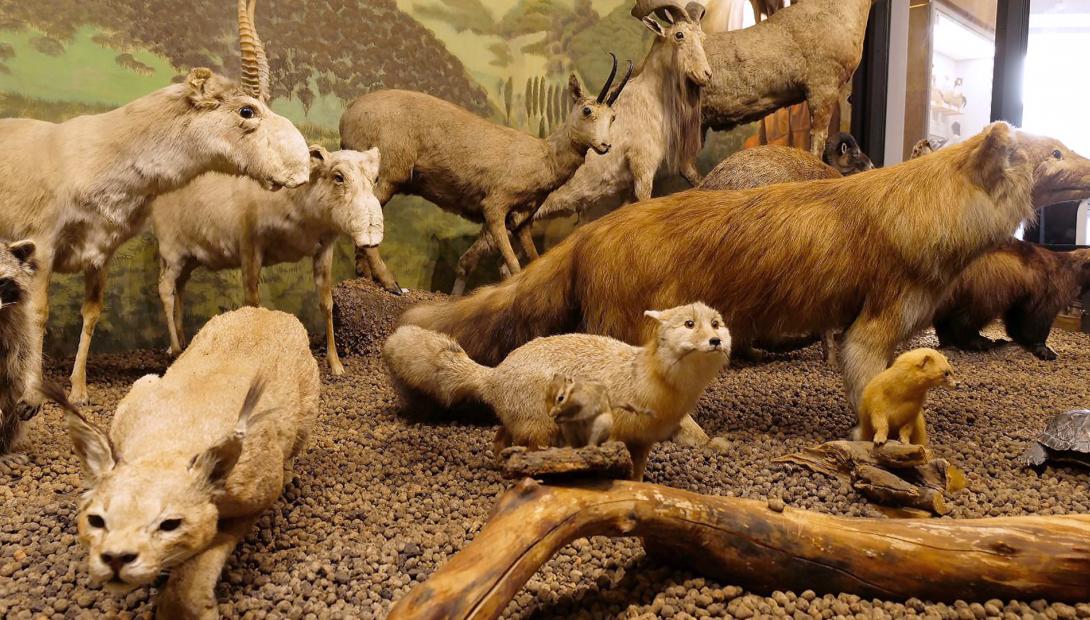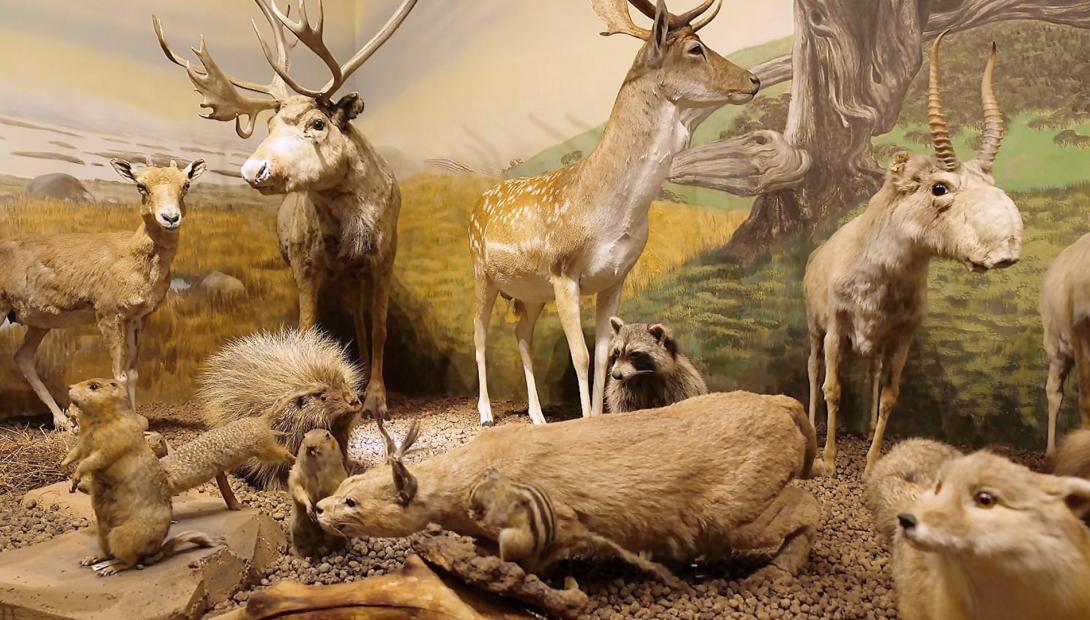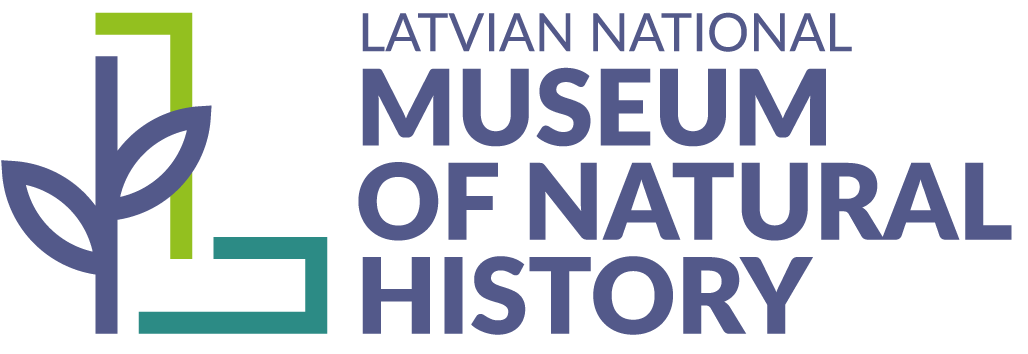


A new and improved version of the the exhibition "Animals of the World" has been created with financial support from the Cohesion Fund. It features animals – mammals, birds and reptiles – from all of the world’s zoogeographical regions.
The exhibition features animals from all of the world's regions or zoogeographical areas, as defined by scientists: Ethiopian, Indomalayan, Neotropical, Australian, and Holarctic.
On view are: the tallest land mammal – the giraffe; the fastest land animal – the cheetah; the largest member of the cat family – the tiger; one of the rare egg-laying mammals – the echidna; as well as many exotic animals. These mammals, as well as the world's largest bird, the African ostrich, are joined by reptiles, including the distinctive frilled agama lizard.
The Museum's collection includes objects of special historical value, such as a small armadillo donated to the museum by one of the first Latvian scientists, Professor Carlos Berg (late 19th century). This armadillo is found in the wild only in central Argentina. Alongside these historical taxidermy mounts, visitors can now see newly created mounts such as a red kangaroo with a joey, a swamp wallaby, a guanaco, common patas monkeys, and more.
Nowadays exotic animals that are made into taxidermy mounts are acquired after they have died a natural death, and from institutions such as the Riga National Zoo. Occasionally the museum also receives donations – such as the rusty-spotted genet, which was gifted to the museum by the world traveller and professional hunter Magnus Pelz, and which is also on display in the renovated exhibition. It should be noted that this is the only specimen of this species in the Latvian Museum of Natural History.
The historical background murals in the showcases, which deftly illustrate the nature of each zoogeographical area, have also been carefully restored.
The new exhibition opened to visitors on 27 July 2022 (the previous exhibition had been created in 1984).





